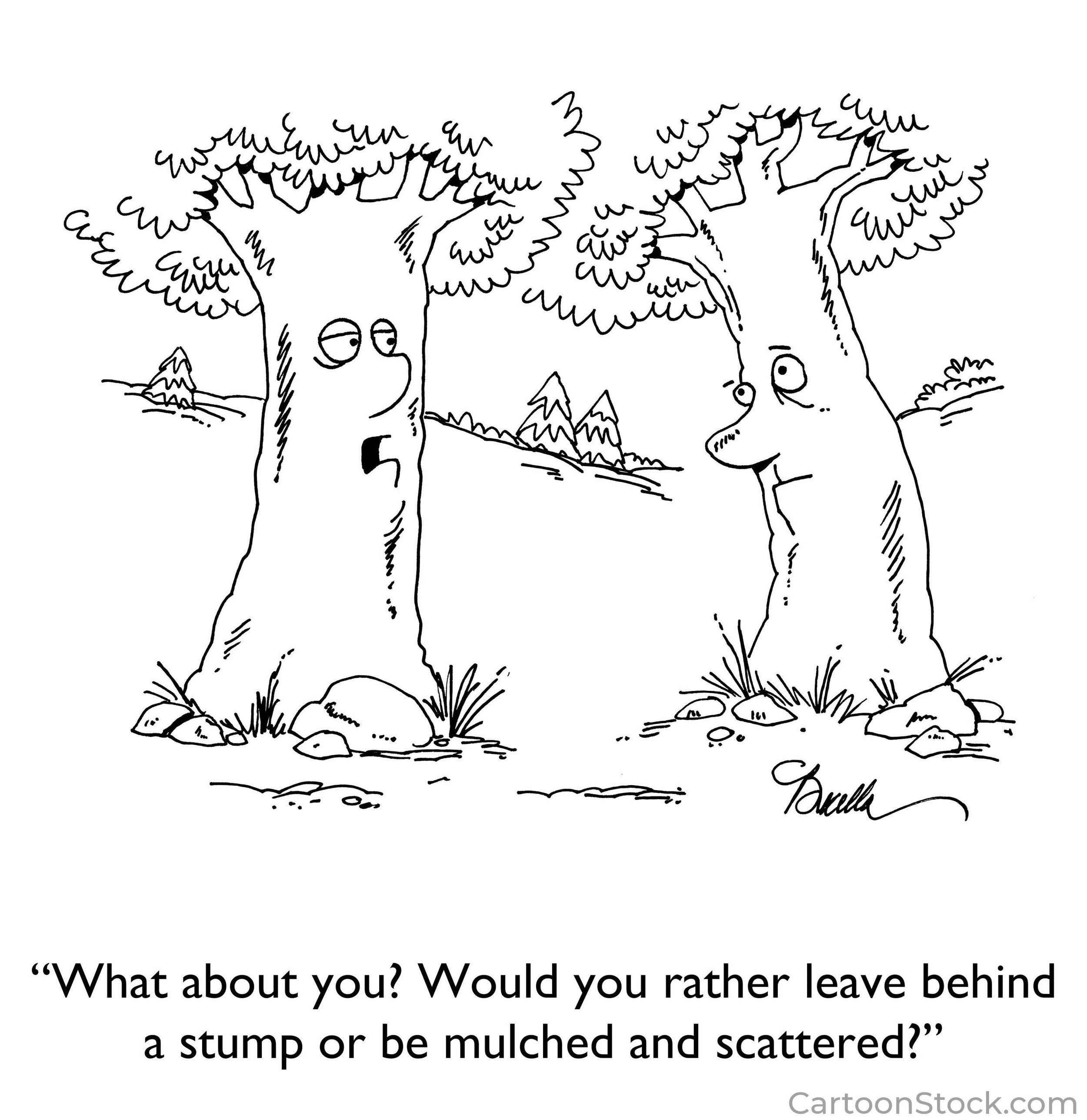Wait! B4 You Cut Down That Tree
Your dead tree may be worth more in your yard than a live one.
Artful log and stone wall at Sakonnet Garden, RI
Dear Avant Gardener, There is a dying Norway Maple on my property that I am going to have professionally cut down next month. I plan to use the wood chips for my fenced dog run. Should I have them remove the stump or leave it in the ground? Also, I cut a bunch of (invasive) tree of heaven saplings on my property this fall, and some of them are growing back. How can I kill the stumps? — Invaded by Trees, Dutchess County, NY
Removing stumps is a huge waste of money and ecological benefit. Unfortunately, there’s a lot of hogwash on the internet about the dangers of stumps, usually promulgated by companies looking for stump removal business. A quick search yields the sort of unfounded drivel that is contributing to the alarming decline in insect species:
Fungi or mold that grows on the stump can be dangerous to your family’s health. The rotting root system may also spread disease and infection to other trees or plants in your yard, leaving you with a barren, zombie garden. . . . A rotting tree stump will invite pests, but even a stump that has yet to start decaying will provide a cozy habitat for termites, ants, beetles, and other insects. Then, you could be stuck with some added extermination costs if the termites and other wood-boring insects make their way from the front-yard stump to the inside of your home.
Talk about rot! Yes, rotting stumps and roots host fungi and insects, but that’s a huge benefit rather than a danger to your family or your garden. Dead trees, including their stumps and roots, provide vital habitat for more than 1,000 species of wildlife nationwide, according to the National Wildlife Foundation, which recommends leaving three snags (dead trees) per acre. And the nutrients from their decomposition nourish plants.
I recommend either leaving a stump as a small snag or cutting the stump level to the ground and planting around it. We cut cedars that were blocking our front windows to the ground and planted perennials around them; within a couple of months, they were entirely hidden.
Death by a thousand cuts
Congratulations on cutting down those tree of heavens; besides being invasive, tree of heaven is the preferred host of the spotted lanternfly, a relatively newly arrived (2014) invasive insect that feeds on a wide range of fruit and ornamental trees. As for the tree of heaven stumps, I had success cutting off new growth and immediately painting the fresh cuts with glyphosate.
Norway maples are similarly invasive and hard to kill. If your Norway maple is not completely dead, paint the stump with glyphosate immediately after it is cut – within a few minutes, as well. Regularly cutting back new growth without applying glyphosate will eventually work, too, though not as quickly.
It may take several years to eradicate both these species from your property. I recommend patrolling the affected areas with pruning shears every month or two and cutting down whatever you find. That’s what I’m doing with invasive rose of Sharon, which is popping up all over my Rhode Island yard like Whack-a-Mole. Fortunately, I’m like Morticia Addams in the garden; I love to prune.
Talk about moles, here’s a question I received in a comment on my Japanese beetle column:
Dear Avant Gardener, Have you ever heard of moles killing trees due to extreme grub infestation in yards? My hypothesis is that there's an overpopulation of both moles and grubs, the mole tunnels are absurdly pervasive. I'm thinking they may have disturbed enough feeder roots to cause the tree to die (technically from drought stress due to root loss). There may also be a further correlation of the increased mole populations now two years after the 13 year cicada flush. Thoughts? — Charles, East Tennessee
I'm sorry about your trees. Your hypothesis makes sense to me. However, I was unable to find evidence either that eastern moles or related northern short-tailed shrews (both common in Tennessee) disturb roots enough to kill trees. Although their shallow tunnels can disfigure lawns, moles generally play a positive ecological role.
Not only do moles aerate our soil and dine on invasive earthworms and Japanese beetle larvae, but they’re considered “ecosystem engineers” whose kicked-up dirt can create fertile ground for plants that host rare butterfly larvae. Molehill soil is also beneficial to savvy gardeners, who make use of it in pots and beds. — The Humane Gardener
Nor is there evidence mole populations increase after a cicada flush. They don’t seem to love cicadas, compared to racoons. Shrews, however, do seem big cicada consumers, so perhaps they do increase after a flush.
Cicadas constituted over 51% (by volume) of the diet of short tailed shrews and raccoons (Procyon lotor) and were present in 66.7% and 77.3% of individuals, respectively. Cicadas were less common in the diet of the opossum (Didelphis virginiana), white-footed mouse, eastern mole (Scalopus aquaticus) and eastern chipmunk (Tamias striatus). The prairie vole, woodland vole (Microtus pinetorum), and fox squirrel (Sciurus niger) did not contain any cicada remains in their stomachs. — Food Habits of Mammals During an Emergence of 17-Year Cicadas
Could voles be using the mole tunnels to access tree roots? Voles certainly kill small trees — sometimes very quickly — by eating their roots and main stems.
Voles may tunnel adjacent to root systems, eating the roots and chewing or “girdling” the main stem just above the ground. — Alabama Cooperative Extension
Tiny teeth marks on the roots or stem base is evidence of voles. If you find them, you might want to collar small trees and shrubs (see how in Fine Gardening). Fortunately, vole populations ebb and flow. In the meantime, keep in mind that your rodent tunnels are providing nesting spots for native bumble bees.
Bumble bees need a cavity in which to build their nest. . . . An abandoned rodent hole is a favorite, as this space is warm and already lined with fur. — Xerces Society
Here’s hoping you see fewer tunnels next year!
— The Avant Gardener
Why, How, Wow!
Why?
Human’s distaste for insects has led to too few dead, decaying trees in human landscapes — even in managed forests. But these dead trees are anything but deadwood.
So important are dead trees to wildlife that researcher Timothy Kent Brown estimates that two thirds of all wildlife species use dead trees or down wood during some portion of their life cycle. — The Ecological Value of Dead Trees
Bee hotels are an example of an unnatural solution to the resulting habitat removal. They can easily become harmful, rather than beneficial.
Commercial and backyard nesting blocks and “insect hotels” are available or can be easily made, but careful maintenance is required to limit the spread of disease and harmful mites in these materials. — Xerces Society
How
You can incorporate the benefits of rotting wood into your landscape in attractive ways. Here are some ideas:
A safe, sculptural snag
A sculptural stump
A stump as planter
A log wall
A partial trunk as path edge
Dead branches left where they fall
A ground-level stump hidden by plants
Wood chip mulch around woody plants
Showing contractor cuts to make a snag from 1,000 Reasons to Love a Snag
Wow!
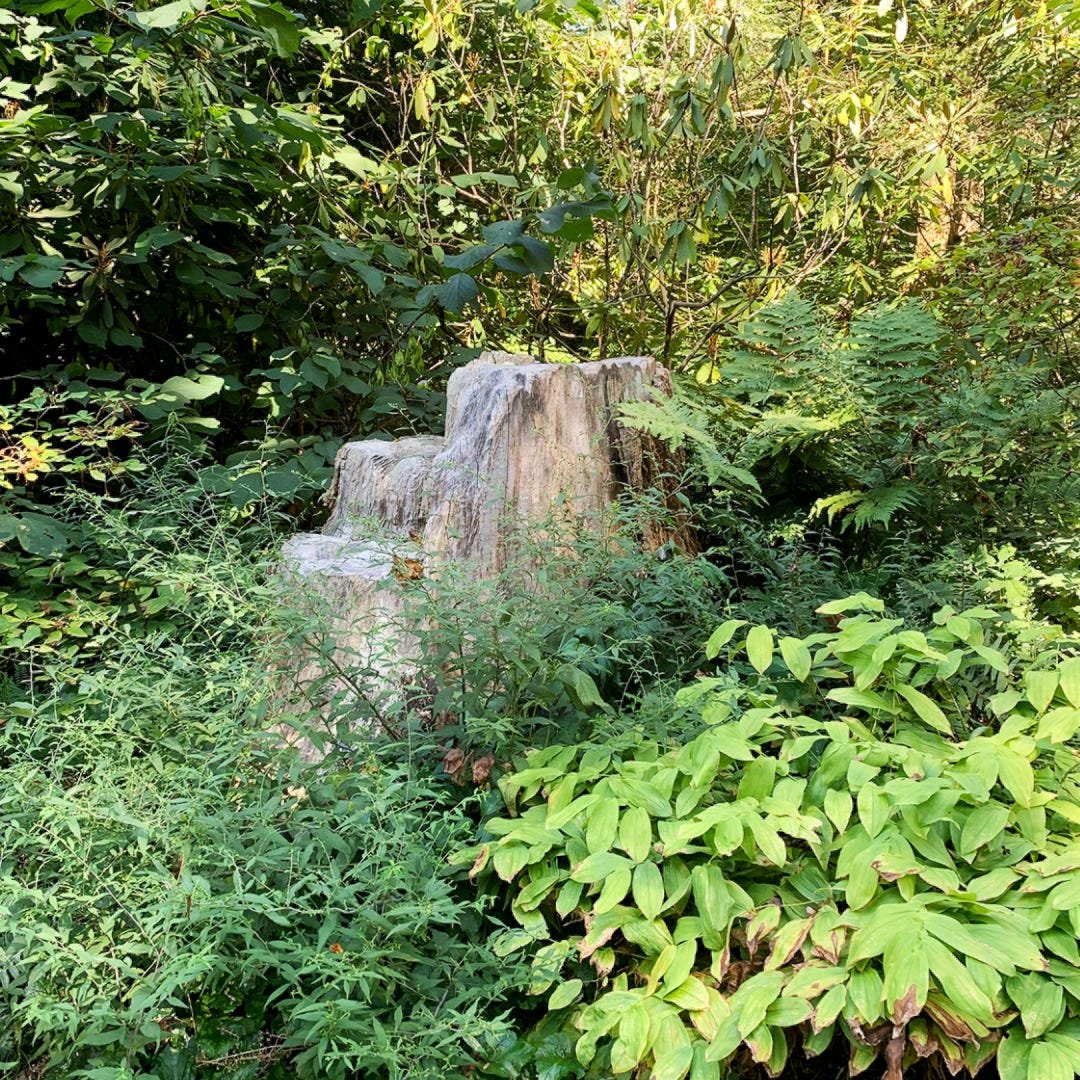
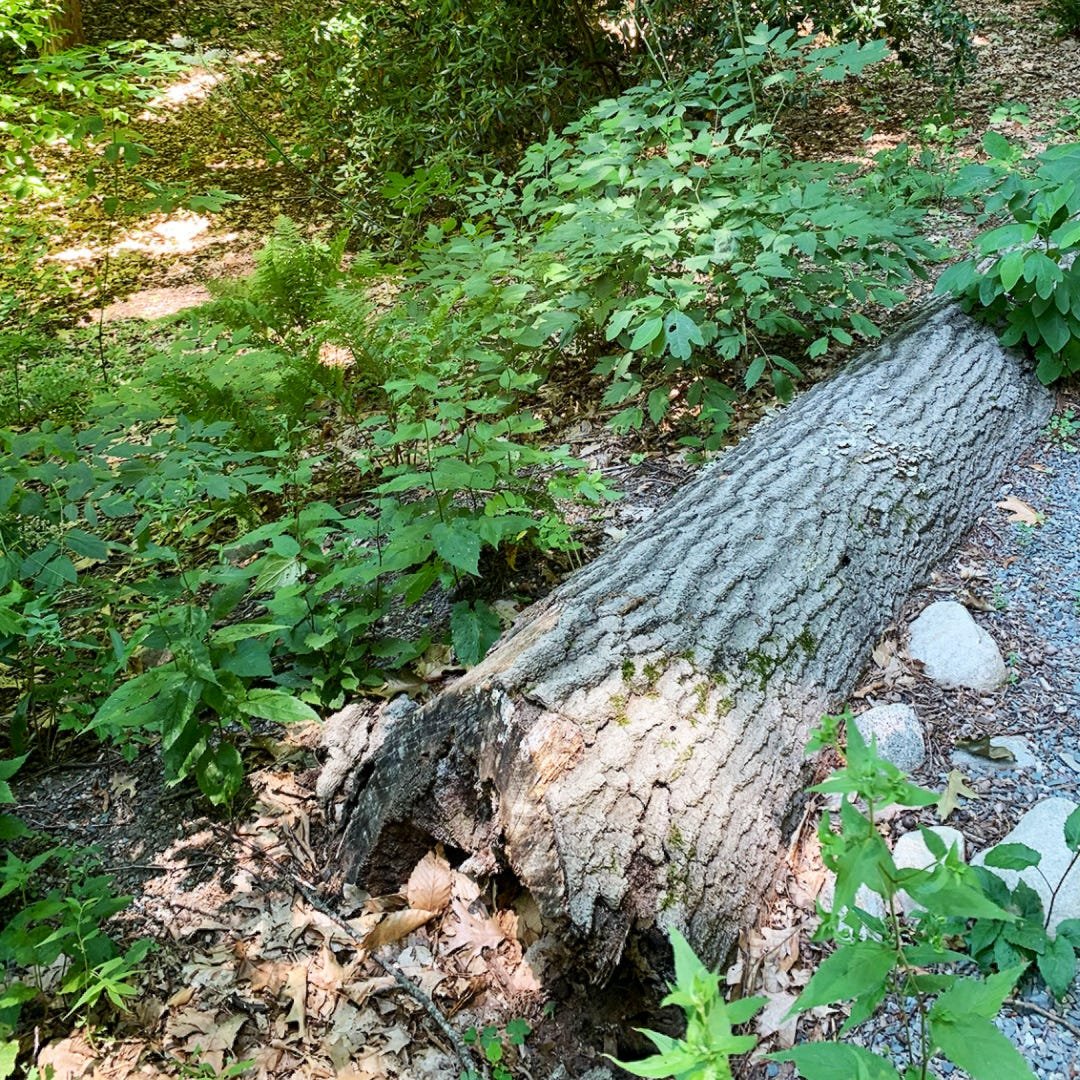
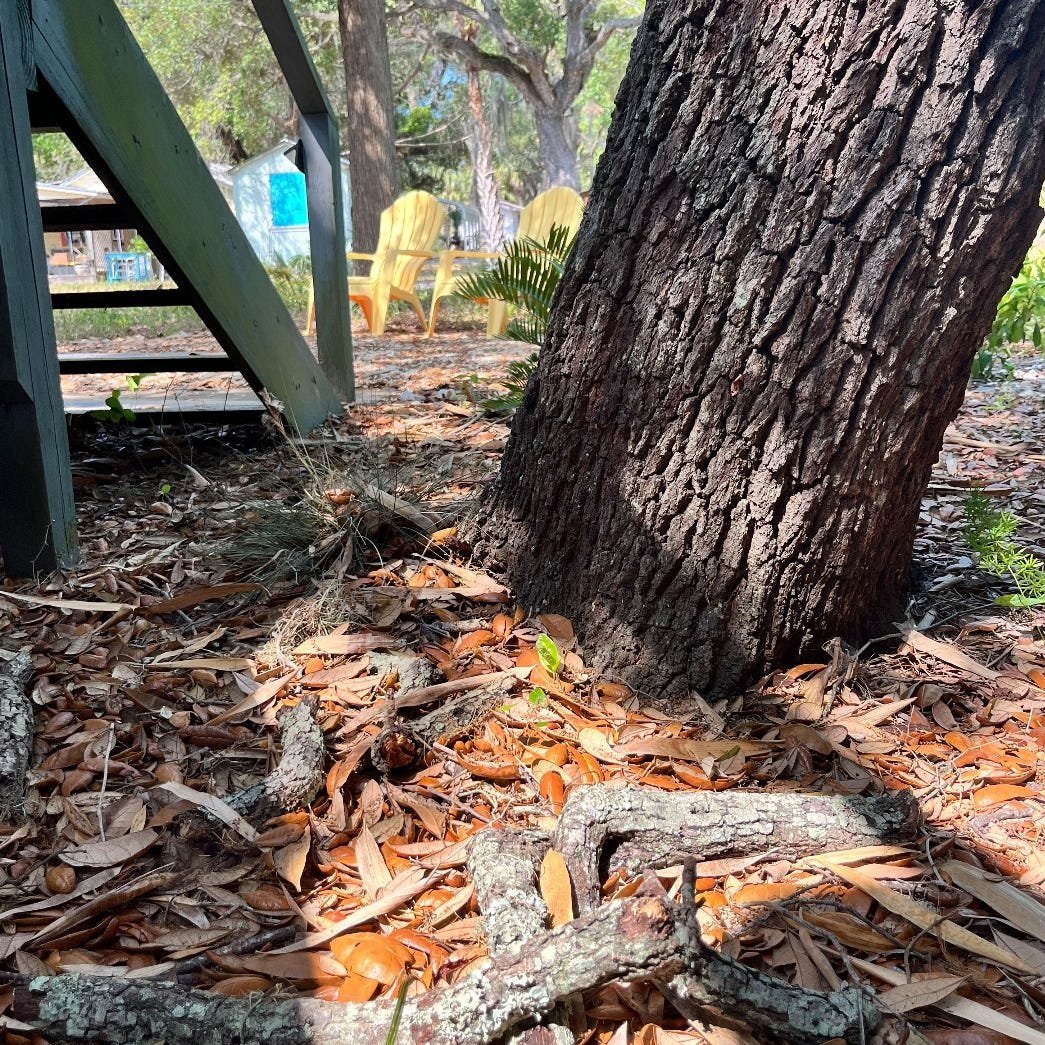
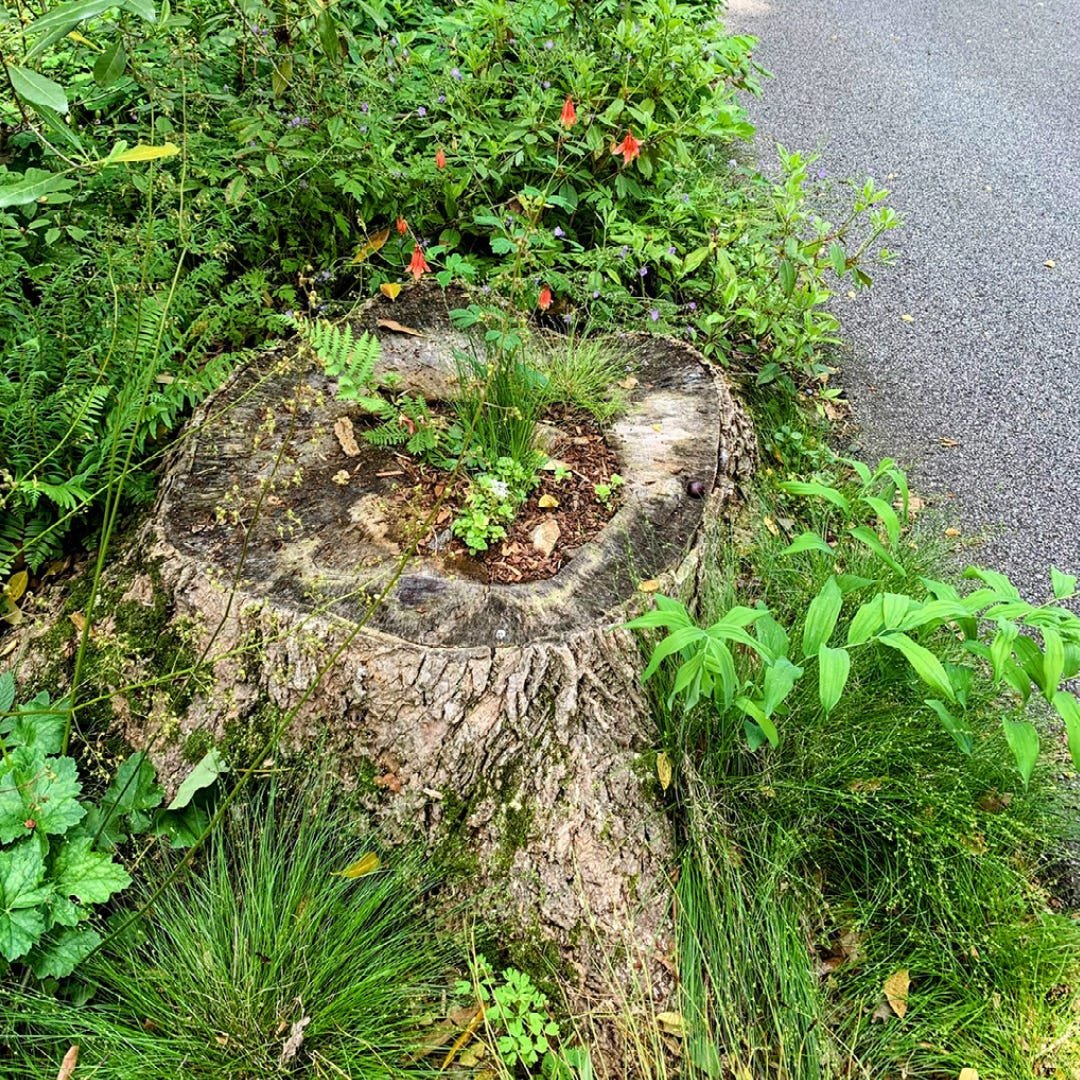
Related Resources
Ready to create a snag? Learn how in 1,000 Reasons to Love a Snag.
Curious to know more? Read The Ecological Value of Dead Trees.



